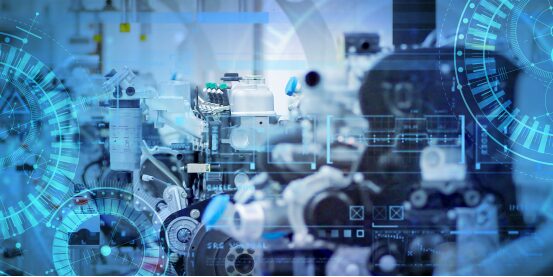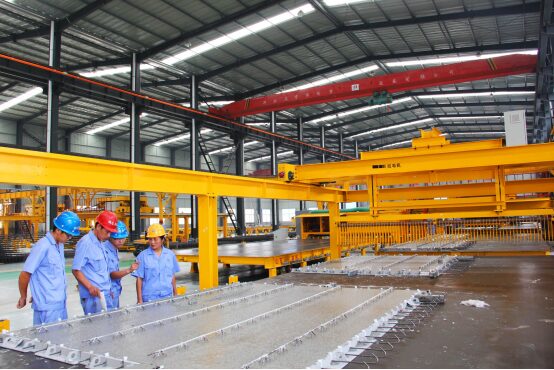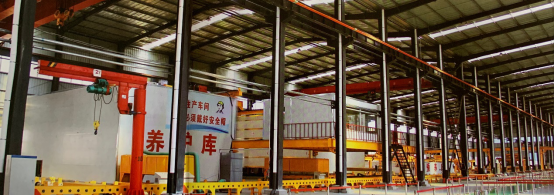“Survive in the first half of the year, develop in the second half,” this is the true portrayal of most small and medium-sized enterprises in 2020.
With “good quality, favorable price, and fast speed,” Tianqi Mingda, which has been officially producing for less than two years, not only survived well under the enormous economic pressure in the first half of the year but also continued to expand in the second half, further increasing production lines and capacity, while starting to build an office building, using its own produced construction components to assemble its office building. What has given Tianqi Mingda the strong confidence to survive and expand in adversity?
Challenge: Construction Industry OR Manufacturing Industry?
In our traditional perception, construction and manufacturing are two unrelated industries, but the arrival of the era of industrialized construction has created a deep intersection between the two industries.
As a child, I built houses with blocks, and now the construction industry can also “build with blocks”. From small family houses to hundreds of meters tall buildings, they can all be assembled using construction components, provided that these concrete components must be produced in advance in factories, that is, prefabricated into PC components.
As a product of industrialized construction, prefabricated buildings represent a significant change in construction methods. Their advantages of “standardized design, factory production, assembly construction, integrated decoration, and information management” play an important role in energy saving, reducing pollution, improving project quality and construction efficiency, and promoting the deep integration of the construction industry with information technology and industrialization. They are currently widely used in construction, transportation, water conservancy, and other fields.
The transition from the construction industry to the manufacturing industry is clearly not as simple as moving the construction site to the production workshop. The traditional construction site is characterized by rough management of cement and sand, while factory production operates under a modern manufacturing model that emphasizes refined management and values the integration of information technology and industrialization. Currently, China’s construction industrialization is in a rapid development stage, and the production of PC components, as a fusion of the construction and manufacturing industries, faces significant gaps in technology, personnel, and management models. How to effectively solve these unavoidable issues and improve the quality and level of production is an important challenge facing PC component factories.
Tianqi Mingda, as a professional manufacturer of PC components, conforms to industry development trends and has newly built a large base and several intelligent production lines in Linyi, Dezhou, officially starting production in October 2018. It is expected to achieve an output value of 200 million yuan this year, basically meeting the demand for prefabricated components required for construction industrialization in the Beijing-Tianjin-Hebei region.
After the transformation, Tianqi Mingda has changed its management thinking and methods, introduced lean production concepts, established an ISO quality management system, and relied on big data for information technology. With the goals of automated component production, intelligent installation, and visualized lifecycle management, it is committed to creating an intelligent manufacturing company encompassing the entire industrial chain of prefabricated buildings, including design and research, production, and construction. To this end, Tianqi Mingda has partnered with Inspur Cloud ERP, based on Inspur PS for information technology construction, gradually bidding farewell to rough management and transitioning to digital and intelligent operations.
Goal: Intelligent Manufacturing!
After the change in production mode, Tianqi Mingda has integrated the concept of intelligent manufacturing into production management, utilizing smart barcodes for the full lifecycle management of PC components; in financial accounting, it adopts a project-based management model, calculating costs by project, strengthening settlement, and effectively managing the company’s finances.
Product Full Lifecycle Management. The project team has streamlined Tianqi Mingda’s business processes, clarified the main line of product processes, and built a business process management platform suitable for PC components, combining the business responsibilities of various departments. From sales orders to project initiation, from design drawing splitting to creating component ledgers, from BOM import, material requisition reporting to generating production data, from quality management to production warehousing, from shipping plans to outbound transportation, installation, and maintenance, all business and production links have been unified onto the management platform, achieving full lifecycle management of products, with information, data, and status of each order project being clear at a glance.
The production process of PC components begins with the splitting of drawings, which generates component ledgers while creating QR codes as unique identity markers for each component, printed and affixed to semi-finished and finished products, achieving one code per item and full-process management. Each process can scan the QR code with handheld devices or mobile phones to read the project and ledger information of that component, and complete related information maintenance, production reporting, quality inspection, and other operations. The application of QR codes not only realizes lean management of products, simplifies process recording and tracking in the production workshop, but also ensures product quality traceability.
Project-Based Cost Accounting. Combining the characteristics of the PC component industry with Tianqi Mingda’s financial management needs, a project-based cost accounting system has been constructed, starting from overall project accounting and analysis, gradually refining to cost accounting and analysis of each major product category within the project, providing comprehensive accounting and management of income, costs, and expenses. For each project or major product category, main materials, auxiliary materials, labor, asset depreciation, energy consumption, etc., are automatically aggregated and allocated through the business process management platform, and analyzed and compared from different dimensions such as department, work team, and personnel, forming financial standard data, which serves as a quantitative basis for sales quotations, profit analysis, business direction decisions, and personnel assessments, effectively enhancing financial supervision.
As a manufacturer of prefabricated building components, Tianqi Mingda reflects significant characteristics of the construction industry in terms of financial settlement, with long settlement cycles, large amounts, high frequency, and complex types of payments. After launching Inspur PS, the system automatically generates accounts receivable based on contracts and orders, and timely reconciles through associated payment slips until final settlement is completed. During this process, warranty funds, materials supplied by the contractor, and even penalties can be individually matched to the corresponding contracts for settlement. The automatic processing of these receivables and payables greatly reduces the workload and complexity of the settlement process, ensuring smooth cash flow.
 Relying on digital transformation, Tianqi Mingda is committed to building an “intelligent manufacturing company for the entire industrial chain of prefabricated buildings.” In the future, it will continue to work with Inspur Cloud ERP to make breakthroughs in areas such as automation equipment upgrades, intelligent factories, and collaborative manufacturing. By using robotic arms for mold laying and automatic warehousing, it aims to improve equipment efficiency and reduce labor demand; through the deep application of ERP big data analysis, manufacturing execution, and process control systems, it seeks to achieve business decision-making, on-site management, and data collection in intelligent factories; and through the internet, it will balance production capacity across multiple factories, collaboratively allocate production orders, and optimize resource allocation, thereby enhancing the efficiency of the entire industrial chain and better promoting the transformation and upgrading of the construction industry.
Relying on digital transformation, Tianqi Mingda is committed to building an “intelligent manufacturing company for the entire industrial chain of prefabricated buildings.” In the future, it will continue to work with Inspur Cloud ERP to make breakthroughs in areas such as automation equipment upgrades, intelligent factories, and collaborative manufacturing. By using robotic arms for mold laying and automatic warehousing, it aims to improve equipment efficiency and reduce labor demand; through the deep application of ERP big data analysis, manufacturing execution, and process control systems, it seeks to achieve business decision-making, on-site management, and data collection in intelligent factories; and through the internet, it will balance production capacity across multiple factories, collaboratively allocate production orders, and optimize resource allocation, thereby enhancing the efficiency of the entire industrial chain and better promoting the transformation and upgrading of the construction industry.





